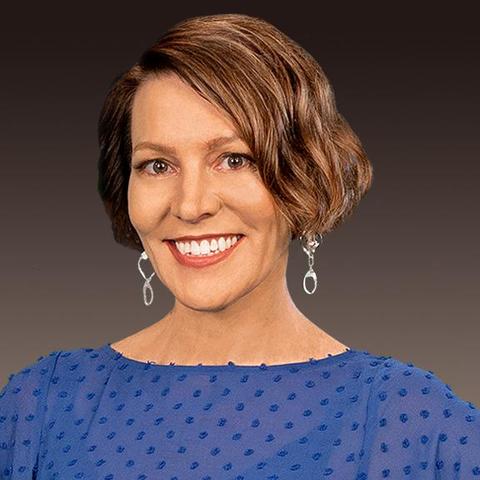Section Branding
Header Content
What You Need To Know: Is Herd Immunity Too Risky?
Primary Content
Georgia Public Broadcasting’s new series What You Need To Know: Coronavirus provides succinct, fact-based information to help you get through the coronavirus pandemic with your health and sanity intact.
In the fight against COVID-19, many countries have shut down businesses and schools, but that’s not the case in Sweden. The country’s relaxed approach is supposed to minimize the damage to the economy. The other goal is to slow the pandemic’s spread through herd immunity — when enough people become immune to a disease after recovering from it or getting vaccinated. GPB’s Virginia Prescott talks with Emory University professor Felipe Lobelo about the risks of herd immunity.
So herd immunity or herd protection? This is ultimately aimed at slowing the spread of infectious diseases. Can you give us a brief sketch of what that actually means and how it works?
Herd immunity is also referred to as the golden ring of protection. So if you have enough people in a community that have been immunized or that have gotten the disease and now are immune, then the transmission of an infectious disease or an agent or a virus in this case is going to slow or even stop completely because, you know, the virus essentially runs out of hosts to infect. So that's what we're trying to achieve with this coronavirus and with any infectious disease.
You mentioned with immunization, it does rely on the assumption that once you have had a disease, whether by getting it or getting a vaccine, you develop an immunity. Is there any evidence that that is the case with coronavirus?
We don't know for certain yet, but we know from previous coronaviruses that you do develop some kind of immunity. We just don't know how long and how strong, you know, whether it's going to be three months, six months, 12 months. We sort of have pretty good indication that a vaccine or getting the disease will protect you. But we still need to have more data in order to definitively say if it's going to be six months, 12 months or longer.
So how about, if we're looking at the difference in the Swedish model, how about risk factors for coronavirus: obesity, diabetes, hypertension, smoking? How do the Swedish and American populations compare on those factors?
Right. So, you know, when you look at the mortality or the impact of a virus, you also need to look at the host that that virus is infesting. And in this case, in the United States, we have much higher risks of poor being, with much higher prevalence of obesity, diabetes, heart disease, physical inactivity, bad diet compared to Sweden and other Scandinavian countries. And that may explain why in the U.S. we have to take stronger lockdown measures because we have a more vulnerable population.
The U.S. also has high rates of poverty and income inequality. How does this factor into the debate over herd immunity?
It's very important because we know the social determinants of health are drivers really of the outcomes not only of chronic diseases, but in this case infectious diseases. Because you start to see that vulnerable populations, populations of color, African Americans, Latinos are shouldering a much bigger burden of disease with coronavirus compared to white populations. And that is really partially explained by, you know, disparities in income, in education, in access to healthcare, you know, in the ability to self isolate, or stigma, work from home versus to being an essential worker. So all those factors, in addition to the biology of the virus, are driving the outcomes that we see.
So the results have been different in different countries. How is Sweden faring even compared to the Scandinavian countries which surround it? How is this model working?
Well, it's a mixed bag. We know that they have a higher total number of deaths and a higher mortality per capita compared to other Scandinavian countries.
Now, we also know that the percentage of the population that has been infected so far, it shouldn't appear to be higher. Maybe around 50% compared to 5% or less in most other countries.
So, you know, if this is a long process, they will slowly achieve herd immunity faster because the virus obviously is going faster through the population, but they're also paying a high toll in terms of mortality, particularly around elderly population. More than 80% of their deaths come from nursing homes.
But that is part of the argument for herd immunity. And critics of this strategy have also compared it to eugenics. Basically, you're depending on the younger, stronger population continuing to survive and in the crudest terms, you know, picking off the elderly and the less strong. What do you think of that criticism?
It's a very valid criticism. I mean, the reason we have public health and mitigation strategies is precisely to protect everyone. And, you know, we do know that the elderly are more vulnerable, but we also know that these virus can affect and does affect younger people and people that maybe don't have preexisting conditions.
Even we're starting to see cases in kids that develop of vasculitis or inflammation of their blood vessels or their heart. So, you know, we really don't know exactly how these virus kills necessarily.
So this idea that we can write off a whole segment of the population to keep the economy going is just a false alternative. We do have the public health and tools in order to mitigate a disaster like this.
But you mentioned that the Sweden is seeing a higher per capita death rate than its neighboring countries. This is a population of just above 10 million for the entire country. So were that to scale up, were the U.S. to adopt this kind of model, what kind of numbers do you think we'd be seeing?
Well, we know if had do we know nothing in the United States, early models predicted up to 2 million deaths due to coronavirus over the next 12 months. And we have now data showing that a big lockdown, a big hammer in order to suppress the virus, hopefully will bring that down to around 150,000 deaths, so like the latest estimate for the next few months.
So had we taken a middle approach, which is where Sweden is doing, which is just doing mitigation strategies but not for suppression, we'd probably be somewhere in between 150 and 2 million deaths. It's very hard to know because you know, these disparities, because our country is very diverse, because people by seeing what's happening in other countries are taking their own measures even before the governor's lockdown. So it's really impossible to tell like somewhere in between.
You could argue that Georgia has taken a somewhere in between strategy so far with Gov. Brian Kemp trying to open up the economy, opening up a lot of businesses. Do you think our health care system, especially here in Georgia and across the U.S., can handle that kind of the kind of numbers? Obviously not as the world — not the country wide numbers that you mentioned of 2 million. But of what is to come?
Every aspect of health care and public health is local, so it's hard to make a prediction about how the state will fare. If we look at the state, we've been relatively doing okay in terms of the percentage of ICU beds, for example, that are being used statewide. But when you drill down into particular communities like Albany or like some areas of northeast Georgia, we do see an overrun in the health capacity of health care systems because outbreaks are localized and they don't all happen at the same time. So it's hard to know how this is going to affect the way the health care system in Georgia is fully going to cope.
I think it's going to cope in some areas, but unfortunately, in areas where there's more vulnerable populations, their likelihood to see—they will have likelihood to see outbreaks and more excess mortality unfortunately, because we're not taking all the public health measures that we need to take. It's not just the suppression, it is also improving our public health capacity to early detect, isolate and find the contacts of people that develop the disease. In an essence, we're not beaten, we're not able to do that anymore.


